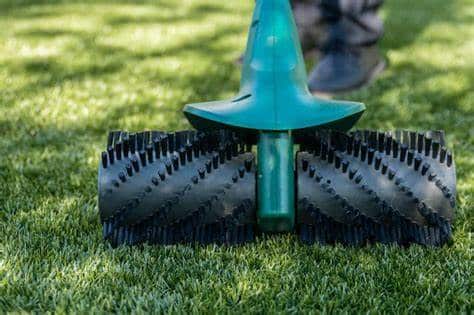How To Clean Pet Waste From Artificial Grass In Coronado?
 Artificial grass has become a popular choice for pet owners looking to maintain a beautiful lawn while accommodating their furry friends. However, while artificial turf may be easier to clean than natural grass, it still requires proper maintenance, especially when it comes to dealing with pet waste. Here are five essential tips to effectively clean pet waste from artificial grass.
Artificial grass has become a popular choice for pet owners looking to maintain a beautiful lawn while accommodating their furry friends. However, while artificial turf may be easier to clean than natural grass, it still requires proper maintenance, especially when it comes to dealing with pet waste. Here are five essential tips to effectively clean pet waste from artificial grass.
- One of the most crucial steps in maintaining artificial grass is to remove pet waste as soon as possible. Leaving waste on the turf can lead to unpleasant odors and potential stains. Use a scooper or a plastic bag to pick up solid waste promptly. For liquid waste, such as urine, rinse the area thoroughly with water to dilute and flush away any residue. Acting promptly not only keeps your artificial grass looking pristine but also prevents the growth of bacteria and other harmful pathogens.
- For stubborn stains or lingering odors, a mild cleaning solution can be effective in restoring the freshness of your artificial grass. Mix a solution of water and mild detergent, and gently scrub the affected area with a soft-bristled brush or sponge. Avoid using harsh chemicals or bleach, as these can damage the synthetic fibers of the turf. After cleaning, rinse the area thoroughly with water to remove any residue and allow it to air dry completely.
- To keep your artificial grass smelling fresh and clean, consider using a pet-friendly turf deodorizer. These products are specially formulated to neutralize odors caused by pet waste and can help maintain a pleasant outdoor environment for both you and your pets. Look for deodorizers that are non-toxic and safe for use around animals. Regularly applying a turf deodorizer can help prolong the lifespan of your artificial grass and ensure that it remains odor-free.
- Proper drainage is essential for preventing the buildup of moisture and bacteria on artificial grass. Make sure that your turf installation includes adequate drainage systems, such as perforated underlayers or gravel beds, to allow water to drain away efficiently. Periodically check your drainage systems for any signs of blockages or damage and address any issues promptly. Good drainage not only helps prevent odors but also reduces the risk of mold and mildew growth, keeping your artificial grass clean and healthy.
- To keep your artificial grass in top condition, establish a regular maintenance routine that includes cleaning and grooming. Schedule weekly or bi-weekly inspections to remove any debris, pet hair, or leaves that may accumulate on the turf surface. Use a stiff brush or rake to fluff up the synthetic fibers and redistribute infill material for a uniform appearance. Regular maintenance not only keeps your artificial grass looking its best but also helps identify any potential issues early on, allowing for prompt repairs or adjustments.
FAQs
Can I Use A Pressure Washer To Clean Pet Waste From Artificial Grass?
While pressure washers can be effective for cleaning artificial grass, it’s essential to use them with caution. High-pressure jets of water can damage the turf fibers or displace infill material if not used properly. It’s best to use a gentle spray setting and avoid directing the stream of water too close to the turf surface.
Will Pet Waste Stain Artificial Grass?
In most cases, pet waste should not stain artificial grass if cleaned promptly and thoroughly. However, certain factors such as the type of waste, the duration it remains on the turf, and the quality of the artificial grass can affect the likelihood of staining. Regular maintenance and proper cleaning techniques can help prevent stains and maintain the appearance of your artificial grass.
How Often Should I Apply Turf Deodorizer To My Artificial Grass?
The frequency of applying turf deodorizer depends on various factors, including the number of pets, the size of the area, and the level of pet activity. As a general guideline, it’s recommended to apply turf deodorizer every 1-2 months or as needed to control odors effectively. Adjust the application frequency based on your specific circumstances and the presence of any persistent odors.
Conclusion
Maintaining a clean and odor-free artificial grass lawn is essential for both pet owners and their furry companions. By following these five tips and incorporating regular maintenance into your routine, you can ensure that your artificial turf remains fresh, hygienic, and enjoyable for years to come. Remember to act promptly, use gentle cleaning solutions, invest in pet-friendly deodorizers, maintain proper drainage, and schedule regular maintenance to keep your artificial grass looking its best. With proper care and attention, you can create a safe and inviting outdoor space for your pets to enjoy without compromising the aesthetics of your lawn. For more information, contact Artificial Turf Coronado at (619) 486-3223.

